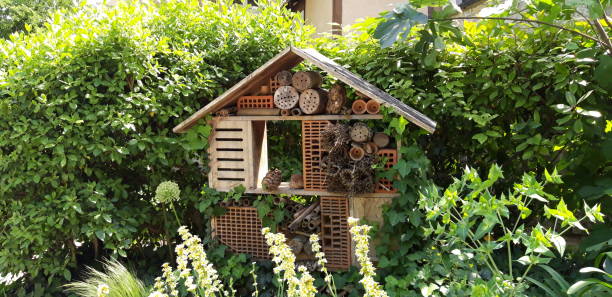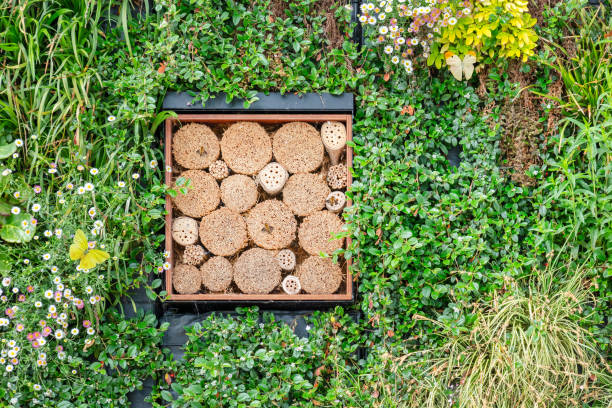There are many instructions and tips for drying herbs. We show you which tips really work. This is how you can easily dry your own herbs.
There is nothing better than cooking with herbs from your own garden. Because it tastes wonderful and smells wonderful. But there are times when you don’t have fresh garden herbs on hand. It is worth having dried herbs in the house for this purpose. We’ll show you how.
How to properly harvest your herbs
The ideal time to harvest herbs is just before or during flowering. This is because the herbs contain the most ingredients and are most aromatic during this time. If you have summer herbs in the garden, it is best to harvest them in July. Herbs from the windowsill can also be dried well. All you need is a pair of scissors or a garden knife and a suitable container to collect the herbs. You will also need twine and rubber bands as well as airtight containers for the subsequent drying.

Which part of the plant is suitable for drying?
The stems, leaves, and also small flowers of the respective plant are suitable for drying your herbs. If you collect the collected plant parts in small bundles, then you will succeed best in drying your herbs. Unless the edible flowers of your herbs are too large, you can dry them along with the stems. You can also thread the flower upright through a trellis. This keeps the flower head intact and you can dry it separately. But large flowers are only suitable for drying to a limited extent. Because large buds hold a lot more moisture, the drying process is a bit more demanding.
Which herbs are good to dry?
Herbs from the Mediterranean region are well suited for drying. These include herbs such as rosemary, thyme, oregano, lavender, and sage. But the closely related plants marjoram, rosemary, and savory can also be dried well. You can also dry peppermint, woodruff, chamomile, tarragon, spearmint, motherwort, mugwort, and lemon bush.
Herbs with a lot of moisture are moderately suitable for drying. Therefore, you should dry these herbs quickly. Otherwise, they lose most of their aroma when they dry. These include basil, parsley, dill, chives, and lemon balm.
Herbs are poorly suited if not much remains after drying than the pure leaf mass. That’s why it’s best to freeze them. These include cress, burnet, sorrel, rue, borage, black nettle, and tripmadame.
Tips to make drying a success
- It is best to pick the herbs in the morning, after 1-2 hours of sunshine. Then they contain the most flavor.
- You should avoid extensive washing. This will only take longer to dry and will affect the quality.
- To free the herbs from the dust, a simple shake is enough.
- Do not tie bouquets that are too thick. Otherwise, the inner leaves remain moist. Also, it takes too long to dry. As a result, the valuable ingredients of the herbs are lost.
The right methods for drying herbs
Some herbs don’t lend themselves well to drying. Because they quickly become limp and almost completely lose their aroma. Since there are different methods of treating herbs, it is easy to lose track. But we have put together tips for fresh kitchen herbs. In addition, you should freeze some herbs, pickle them in vinegar or make herbal oils out of them. But you can dry other herbs wonderfully. In the following, we will show you how to dry your garden herbs.
1) The air drying of herbs
The gentlest and easiest method is air drying. But this method is very time-consuming. However, air drying best preserves the ingredients. A warm, wind-protected, and shady place is ideal for drying. The temperature should not exceed 35 degrees. You hang the herbs loosely in small bouquets next to each other. Drying takes no more than 3-4 days.
2) Drying herbs in the dehydrator

The more modern variant is the use of a dehydrator. The machine gently removes the moisture from the herbs. You should not set the device too hot, between 30 and 50 degrees is ideal. Also, read the article Foods for dehydrating and drying.
3) Dry herbs in the oven
Drying in the oven at a low temperature (30 to 50 degrees) is also a good method. To do this, chop up the garden herbs and then place them on a baking sheet covered with baking paper. Leave the oven door ajar so that the evaporated moisture can escape. Drying the herbs in the oven takes about 3 hours. Cleaning the oven beforehand is an advantage, otherwise, the whole smell will seep into the apartment when the herbs are drying.
4) Drying the herbs in the microwave
Some Mediterranean herbs can also be dried in the microwave. However, you should only use this quick type of drying for very dry herbs without a lot of moisture. You can use oregano, thyme, or marjoram for this. But you should only dry them in short intervals of 30 to 45 seconds at a maximum of 300 watts. You also cover the herbs with some kitchen paper. And after each interval, the herbs are turned. There is no need to clean your microwave afterward.



















